The media can be a powerful tool in preventing violence against women and children, according to research released by Our Watch, Australia. Can be. But isn’t.
“There is a clear link between media reporting and community attitudes towards violence against women,” Our Watch chief executive, Mary Barry says. “The way news media frame a story about violence against women can have a powerful impact on the way the public understands the issue. Who or what is selected to appear in the news and how those individuals and events are portrayed matters. Blaming victims for the violence inflicted upon them, for instance, still happens in one in six articles about violence against women. Not only are people never to blame for experiencing violence, in society these views impact how many people report violent incidents and conviction rates,” Barry asserts.
According to the National Crime Records Bureau of India, reported incidents of crime against women increased 6.4% during 2012, and a crime against a woman is committed every three minutes. In 2012, there were 244,270 reported incidents of crime against women, while in 2011, there were 228,650 reported incidents. Of the women living in India, 7.5% live in West Bengal where 12.7% of the total reported crime against women occurs. Andra Pradesh is home to 7.3% of India’s female population and accounts for 11.5% of the total reported crimes against women.
65% of Indian men believe women should tolerate violence in order to keep the family together, and women sometimes deserve to be beaten. In January 2011, the International Men and Gender Equality Survey (IMAGES) Questionnaire reported that 24% of Indian men had committed sexual violence at some point during their lives. That was 2012! Only worse now as we close 2017.
While so much has been said, reported, and reams of fine print spilled over issues of violence, India simply services lip-mouth to the monster under the bed, and then resumes life with a chalta hai attitude. What about women in media? According to a 2014 report Women’s Media Centre (a non-profit founded by Jane Fonda, Robin Morgan and Gloria Steinem) in news media it’s still a man’s world. Male journalists make up 63% of bylines in print, internet and wire news media, with women earning only 36% of bylines or on camera appearances.
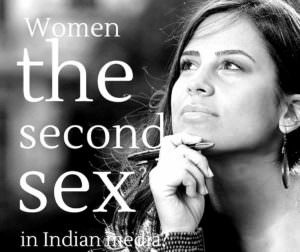
Cut to India, the quint (2015 report) quotes a grim scenario depicting a clear gender imbalance in the number of contributors to the press, as made clear by a Newslaundry review of four leading Indian English newspapers. Of the 8,681 articles reviewed, 73 percent were written by men. This means that for every piece written by a woman, three were written by men. A UNESCO report on women journalists says that even today, women in the media account only for 24% of all opinion-makers. According to a report by the International Women’s Media Foundation, women account for only 13% of all senior managers in the media in Asia and Oceania. In South Africa however, that number is skewed the other way, with 79.5% women in senior management positions. Though not so prevalent in television these days, women have often been asked by editors to focus on “soft stories”. They are asked to write features, and report on issues that men can’t – or perhaps don’t want to cover – for instance, gender, fashion, lifestyle, health and education.
Have you heard of the “Smile and Get the Story” theory? We have. I used to be a lead page 1, crime reporter in my OHerald days. Been there, heard that!!
A sprightly “hard-news type” reporter from CNN-IBN who didn’t wish to be identified told the quint that whenever she would come up with a big news break, her male contemporaries would dismiss it, saying she must have smiled and got the story. And if she would get a story out of a woman, they would just credit it to “mahila-mahila bonding.”
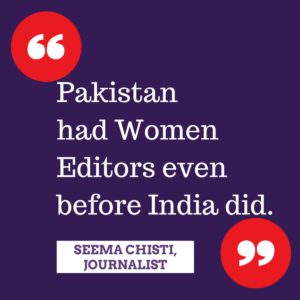
Vidya Munshi, said to be the first woman journalist in India, began working in 1952 as the Calcutta correspondent for Blitz, an investigative journalism weekly. While just a few months earlier in October 1951, Pakistan had already got its first female editor, when Zeb-un-Nissa Hamidullah founded Mirror, a popular Pakistani social magazine. Veena George became the first woman Executive Editor of a Malayalam news channel after 16 years as a television journalist. Contrast that with Jammu-based English newspaper Daily Excelsior. It still has a policy against employing women journalists.
Times, are they really changing? What then is our (women in media) true voice? Sanjukta Basu, another firebrand, outspoken writer, feminist, photographer, does not shy from calling a spade by its name. Excerpts of our interview:
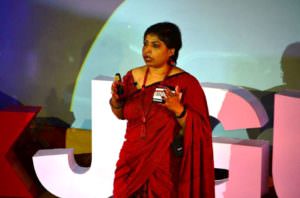
Ethel Da Costa: Your comment on the changing face of Indian media and if women (in media) are re-defining the roles, values and balance of power.
Sanjukta Basu: Indian media has changed a lot that is needless to say. Never before was media so pro-establishment, playing as a mouthpiece of the ruling govt. India has been a land of people’s struggle right from the independence struggle to farmers movement, Dalit movement, labour movement, and several other socialist communist struggle. In all these struggles, the press played a great role. Through 60s, 70s, 80s, journalism was at par with activism, as it should always be. But with the current political regime, this is the first time that we see so many media, particularly TV media, doing unabashed sycophancy. Every day they pick up topics that are irrelevant for the real India, just to snub the opposition party and fill young impressionable minds with hollow pride for the ruling party. Until 2014, media was engaged in criticizing, making fun of the then ruling party, and Prime Minister, Manmohan Singh. But that trend has completely disappeared after May 2014, and today we hear that even comedians are not allowed to make jokes on the PM.
Women play no different or lesser role in this sycophancy when it comes to TV media. However, it is remarkable that there is a group of fierce female print / web journalists who are staunch critiques of Modi, and are doing some ground breaking investigative journalism taking the government head on. They are being trolled, vilified, but nothing deters them, and if you look at the numbers today women journalists are braver than ever.
ED: As a journalist, what are the challenges today faced by women in media and how do we surmount it?
SB: Life threat is there, as we recently saw the murder of journalist, Gauri Lankesh. Threats are big, but murder is extreme, doesn’t happen everyday. What we face every minute, every hour is the constant trolling on our social media spaces. The amount of trolling is unspeakable, it is a horror. I myself face abuse on a daily basis, there are millions of them like termites crawling out and spreading all over, dedicatedly doing this. There are rape threats, death threats, slut shaming, body shaming, calling us ugly. Some of us are strong, we can withstand the abuse, but many voices are silenced by trolls. Trolling is an online version of the mob lynching by gau rakshaks.
ED: What is the true voice of media? How genuine is this voice in the face of propaganda, paid media, political favoritism, cyber trolls and goon culture?
SB: Finding the truth is becoming increasingly difficult. Social media is used most blatantly for spreading fake news, and this is being done by political parties. Even top ranking members of the BJP recently tweeted fake news / photo shopped images. A photo of a film’s scene was spread claiming to be photo of Basirhat riots. When the truth comes out, they simply delete the tweet or say my Twitter was hacked. These have become routine. Based upon completely false information, full 2 hours of TV debates are done.
ED: What can women in media do to fight rising crimes against women in India. Have we done enough? Where have we failed? How do we make it right?
SB: No. we haven’t. Women in media are not any different than men. They pick their stories conveniently. Remote villages from states far away from Delhi fall off the radar. Not enough reporting of issues is being done, crimes against women itself has become narrow. Somehow media thinks only rape is a crime. No in-depth stories are done on so many other aspects, domestic violence, sexual harassment at work place, honor crimes. TV media is not interested in these because they don’t bring TRP. These issues only remain as small items on newspaper and just become statistics. There should be much more conversations on women issues, not just as crimes, but over all issued in the media.
ED: Your comment on the recent murder of journalist Gauri Lankesh. Has the media done enough to bring justice to this brutality.
SB: Media did its bit for few days and then moved on to newer topics. That is the curse today. Stories have no shelf-life, they become obsolete within a few hours. Gauri’s murder should shake the inner core of all of us, because it can be us next, any of us. Entire media, whether print or TV should be on top of this story and fight for justice, but they are divided on political lines, some actually celebrated her death, insinuating Gauri deserved to be killed.
ED: The power struggle and the relevance of ethical journalism in today’s times. Are these scales mis-balanced? What is your viewpoint on its solution?
SB: The scales are mis-balanced. It is very difficult to do stick to honest, ethical journalism, make ends meet, pay your bills, and be alive all at the same time. You are either at the risk of being unemployed, because most editors are sold. Or, if you have money and can do your independent journalism, you are at risk of losing your life, as it happened to Gauri. Young journalism graduates need jobs, they cannot work in isolation. To keep their jobs, they have to succumb to a system that is totally politicized. But at the same time, the internet provides boundless opportunity to subvert the system. The solution lies in crowd funded, reader funded media via internet. The thing is, humans with a free spirit will figure out ways to make their voice reach out, but the struggle is immense.
ED: Has Media been reduced to a political tool, to own and use (as more political heads own media establishments and journalists married to political stalwarts).
SB: Yes very much, media is highly politicized now.
ED: What then truly is the role of Media in today’s times?
SB: Role of media today need not be any different than what it used to be for hundreds of years. Just that today, media persons need to remind themselves of the core ethics of journalism. Media/press is supposed to be the fourth pillar in democracy. It’s single most important task is to make the government answerable to the citizens. That is still the media’s most important role. Traditionally, media should be asking tougher questions from the government, not the opposition, and keep the government under constant scrutiny, verify very claim the government makes about their report card…but this is not what the Indian media is doing. Some of them are, but most aren’t.

ED: Your 5 must know guidelines to young women venturing into media roles
SB: 1) Be honest. It is ok to choose a political side, but don’t let that affect your stories.
2) Don’t do stories which you are not convinced with, just because of TRP.
3)The internet is a powerful medium, use it effectively. In case your ethics don’t allow you to do a story, quit, reach out to an audience through the internet.
4) Follow up. Always follow up your stories and see what action have been taken, what’s the progress. This is completely missing these days. Media just keeps moving from one story to another, there is no follow up.
5) Remember gender perspective in each story. No issue is free from a gender angle, always be conscious of that. Talk about how a given issue affects women uniquely.

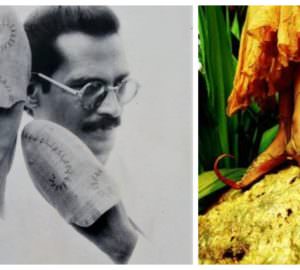
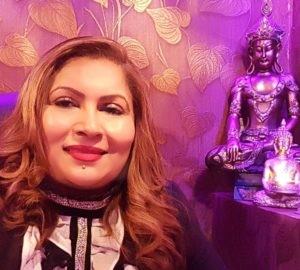

Good luck